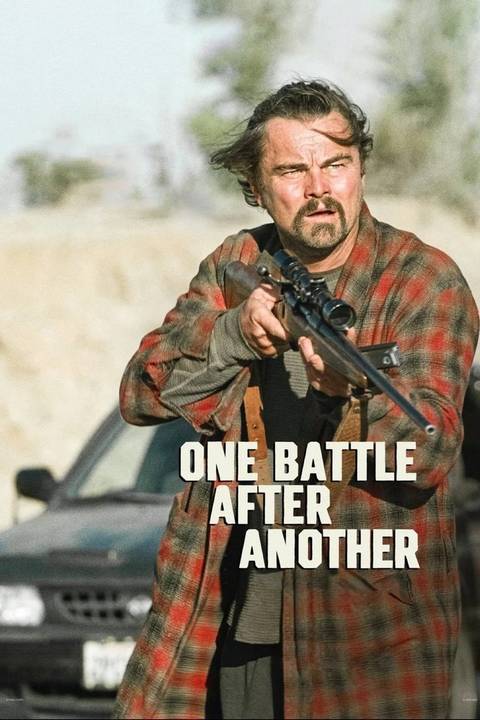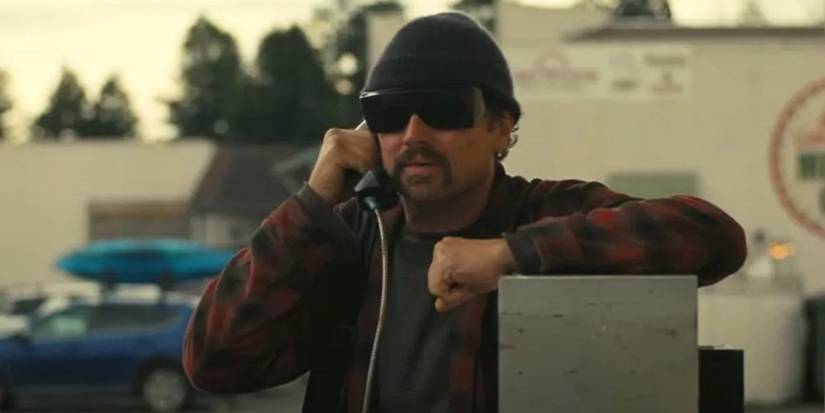
There are many perks to living in Los Angeles. The most obvious is the weather, i.e. the lack of snow. A close second to the weather, though, is the cinema, and the things you get to experience here that you can almost nowhere else, like seeing One Battle After Another in VistaVision like I did on Friday night.
The Vista Theater in Los Angeles is one of just four theaters in the entire world that is projecting director Paul Thomas Anderson’s new film in the VistaVision format. Thankfully, I live fairly close to the Vista, but honestly, even if I had not, I would have made a further trek to be in such rarefied theatrical air.
Those three-plus hours before, during, and after the film equate to easily one of the best cinematic experiences of my life, not far behind the raucous 2022 BeyondFest screening of RRR at the TCL Chinese Theatre. Not only was the film honestly one of the best I’ve seen in decades, but it was such a pristine presentation, with more than a few surprises.
What Is VistaVision? A Brief Primer On The Iconic Format
VistaVision was created by Paramount in 1954, as part of an effort to lure viewers out of their homes due to the advent of television sets becoming more and more prevalent in every American home. While normal 35mm cameras had the film stock inserted vertically, the VistaVision process re-oriented the camera gate, with film being inserted horizontally.
This resulted in a film print with higher resolution and a finer grain. It was also the studio’s answer, of sorts, to emerging formats like Cinerama in 1952 and CinemaScope in 1953. Cinerama was shot on an unwieldy three-camera rig with all three strips projected side-by-side on a curved screen, though CinemaScope used just one strip, introducing anamorphic lenses.
1954’s White Christmas was the first film shot in VistaVision, with other classics such as the John Wayne and John Ford Western The Searchers, Cecil B. DeMille’s The Ten Commandments, and Alfred Hitchcock’s Vertigo and North By Northwest filmed in the format. However, it quickly fell out of fashion with the rise of Panavision cameras and improved film stock.
The last film entirely shot in VistaVsion was One-Eyed Jacks in 1961, but VistaVision didn’t disappear completely. Visual effects guru John Dykstra modified a VistaVision camera to create what became called the Dykstraflex camera, the first ever digital motion control photography system that was used for intricate shots in the original 1977 classic Star Wars.
Throughout the decades that followed, VistaVision cameras were used sparingly for complex shots in films like The Dark Knight, Indiana Jones and the Kingdom of the Crystal Skull, Inception and Scott Pilgrim Vs. The World. Director Brady Corbet became the first filmmaker in decades to shoot his 2024 film The Brutalist entirely in VistaVision, though it wasn’t projected in the format.
Now director Paul Thomas Anderson is sparking a full revival of VistaVision with One Battle After Another, and after being one of the lucky few who were able to watch the film on opening night in the format it was intended to be seen, the results were nothing short of extraordinary.
The VistaVision Experience In a Nutshell
Watching a film projected in a 1.5:1 aspect ratio can be a bit jarring at first. Still, it doesn’t take long to see how absolutely gorgeous this print and this format is. Every shot — from sweeping desert vistas, to one of the most subtly intense “car chase” scenes I’ve ever seen — is simply immaculate.
Aside from The Vista, you can see One Battle After Another in VistaVision at Regal Union Square 17 in New York City, Odeon Luxe Leicester Square in London and Coolidge Corner Theater in Brookline, Massachusetts.
VistaVision was designed, as PTA explained in a video earlier this month, “to try to figure out how to use a larger portion of the 35mm camera negative,” and you realize quickly how much you’ve been missing. Simply put, the moving image put forth by a master craftsman like PTA is perhaps the most stunning film I’ve ever seen.
Since 1.85:1 or 2.35:1 ratios have been normalized so much over the years, you might think you’d be “missing” something with a 1.5:1, but that couldn’t be further from the truth. In fact, its beauty lies in its efficiency, with the format honing in on precisely what PTA wants you to see, while allowing a gorgeous presentation.
Oh, also, it doesn’t hurt that the film itself is possibly the best I’ve seen in decades. Believe the hype. It is real.
A Few L.A. Surprises
I’ve lived in Los Angeles for almost 18 years, though, sadly, I have not spent as much time at The Vista as I probably should have. The one-screen revival theater is perhaps best known for its resurrection by Quentin Tarantino, and for having so much legroom you could literally park a motorcycle between rows. Yes, I’m serious.
I arrived approximately 25 minutes before the 6:30 PM screening, and when I saw the line was already gone, I knew I should have arrived earlier. Naturally, all the good seats were taken. The line for concessions was halfway down the aisle, so I just skipped it and found an aisle seat in the third row.
I noticed a photographer milling around the northeast exit, so I deduced they were going to bring someone out to introduce the film. I assumed it would be PTA. I was stunned to see not only the writer-director, but also Leonardo DiCaprio and brilliant newcomer Chase Infiniti, walk through those doors to deliver an amazing intro you can watch below.
It’s also worth noting that, upon getting my ticket scanned at the door, they handed out these small cards to patrons. The cards featured boxes for all six formats that One Battle After Another was being screened in — VistaVision, IMAX 70MM, IMAX, Dolby, 70MM and 4DX — with white boxes that can be stamped to signify each screening.
It’s exceedingly rare that I see anything in theaters more than once. I have many friends that will insist on seeing films they truly love upwards of a dozen times in theaters, though that’s just never something I’ve done. Until now. I have every intention of seeing One Battle After Another in every single one of these six formats.
It’s also worth noting that the young woman who handed the card to me also said that if you see the film in all six formats there is “a prize” that can be claimed, presumably after posting on social media.
Is It Worth Seeing One Battle After Another In VistaVision?
Yes. 1000% yes. If you reside in or are even remotely close to Los Angeles, New York City, London or Brookline, Massachusetts, buy a ticket for One Battle After Another in VistaVision, and get ready for a treat. PTA, Leonardo DiCaprio, Chase Infiniti and Benicio del Toro are all astonishing and will likely get Oscar nods.
It’s easily the best film I’ve seen all year, perhaps even the best of the 21st century. Movies like this in a format like this were designed to bring people to theaters, and I can only hope they show up en masse, because the film and the VistaVision experience are absolutely worth it.

- Release Date
-
September 26, 2025
- Runtime
-
162 minutes
- Producers
-
Adam Somner








